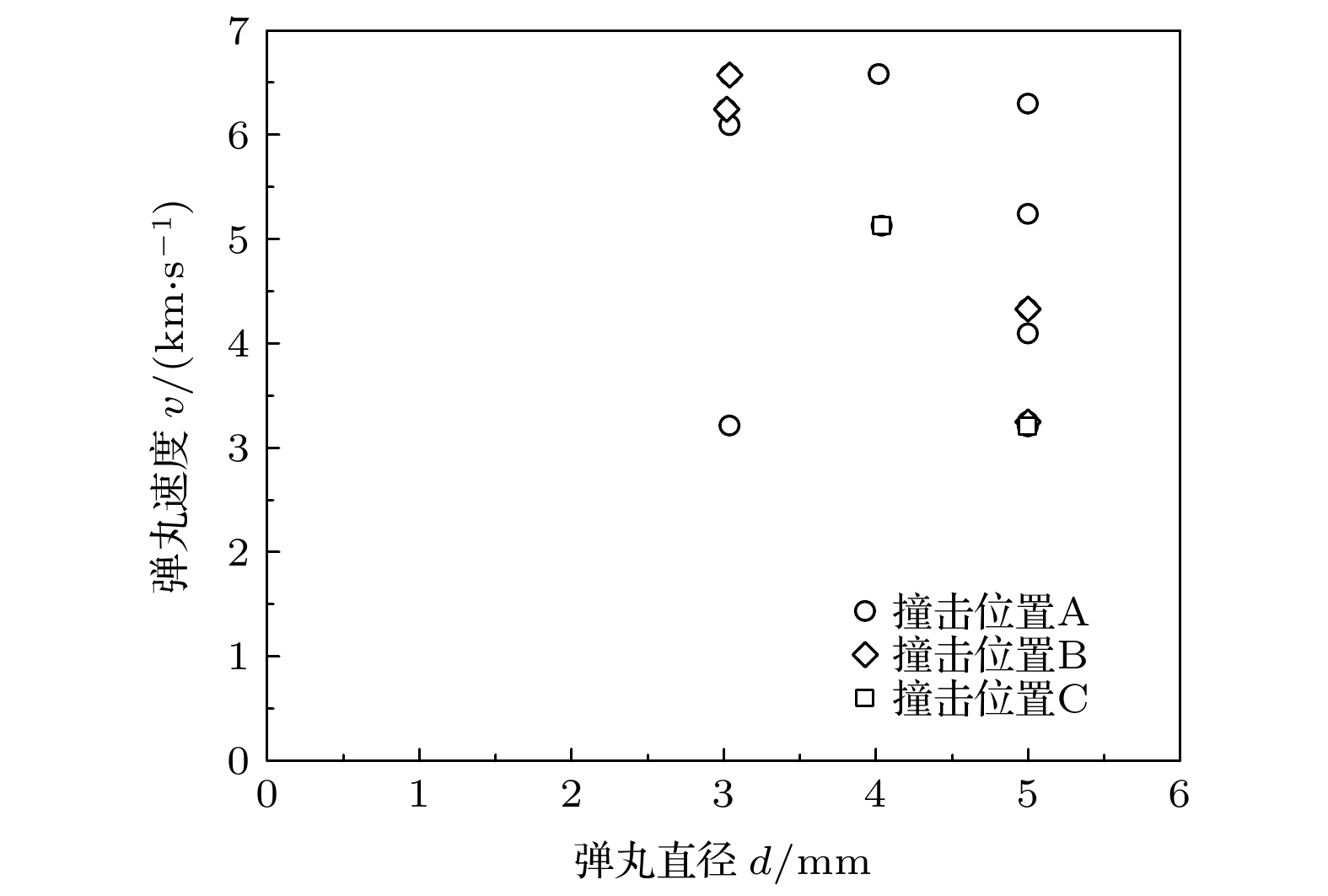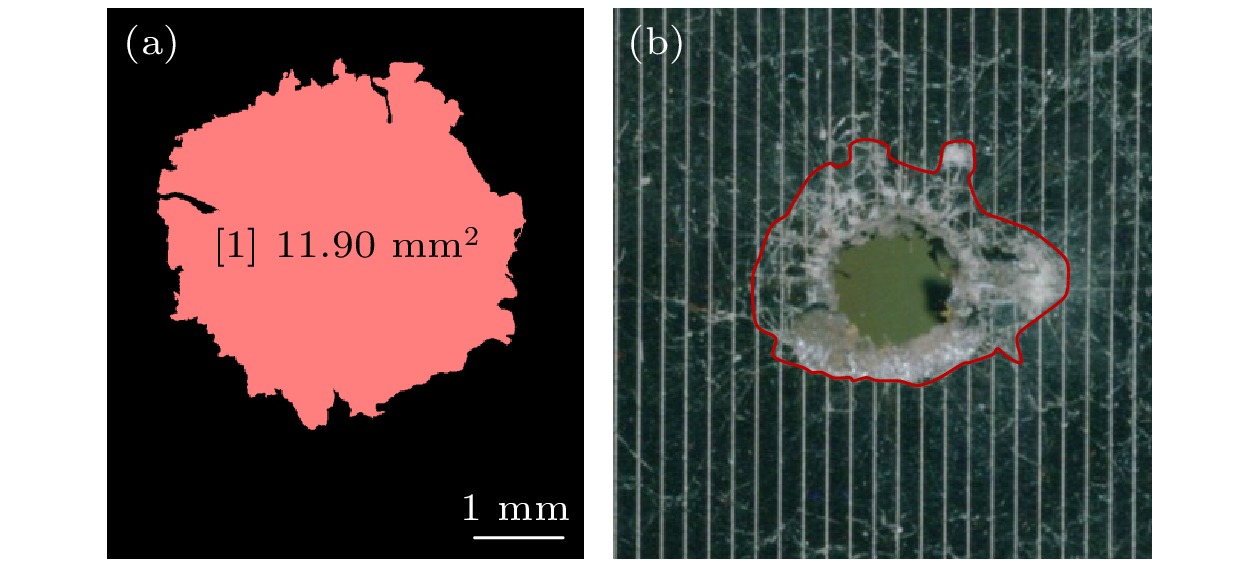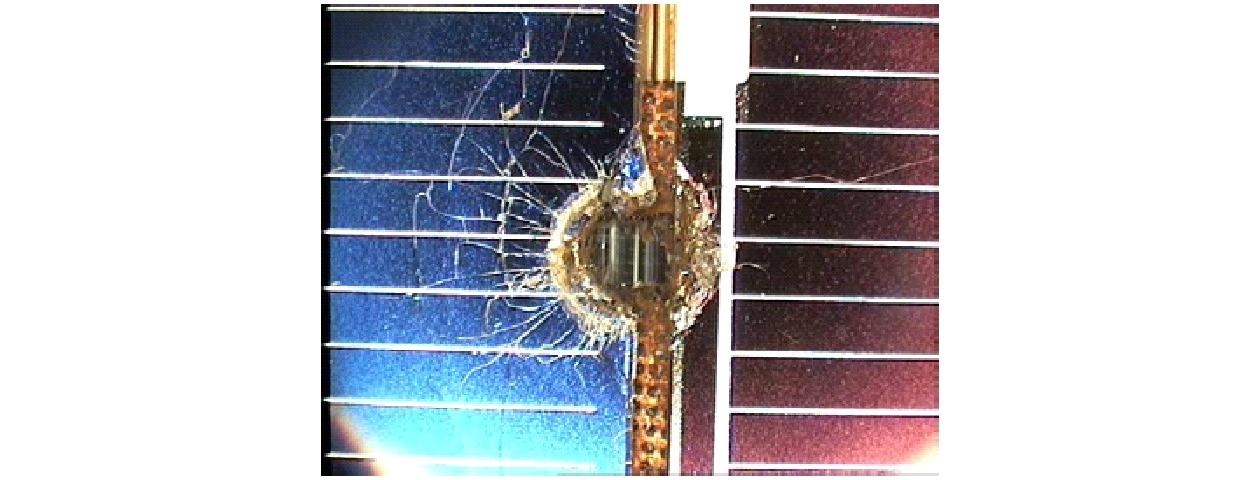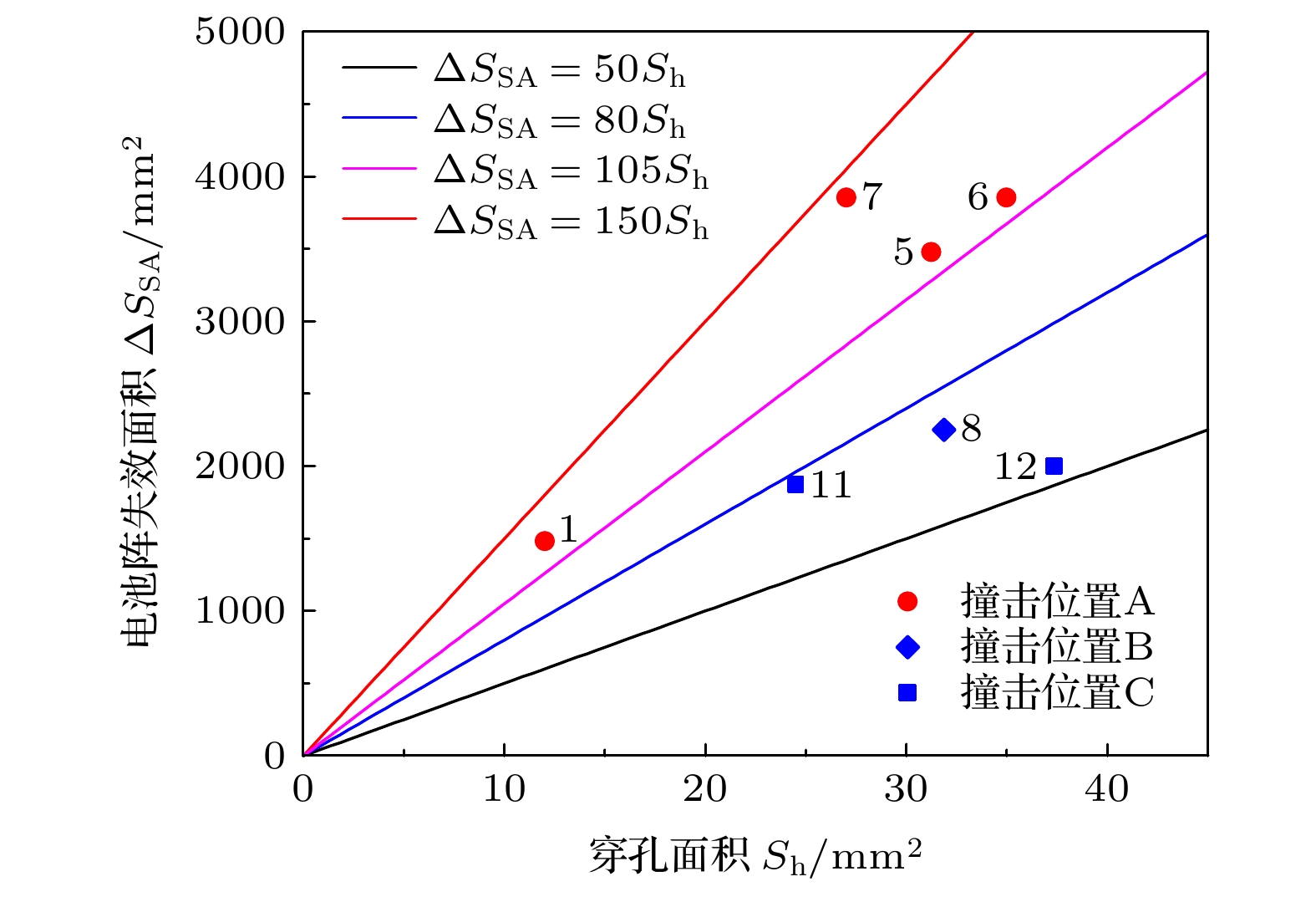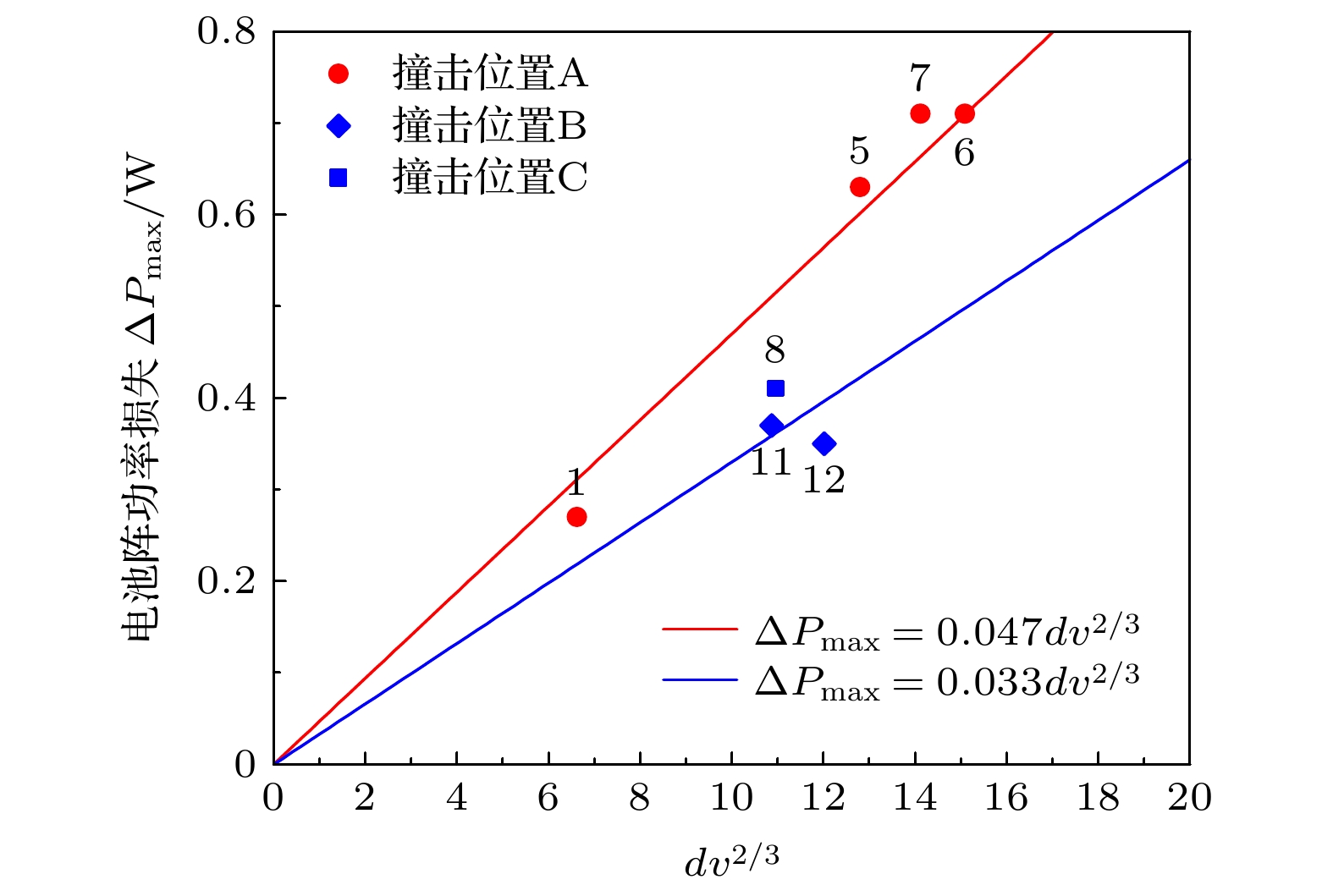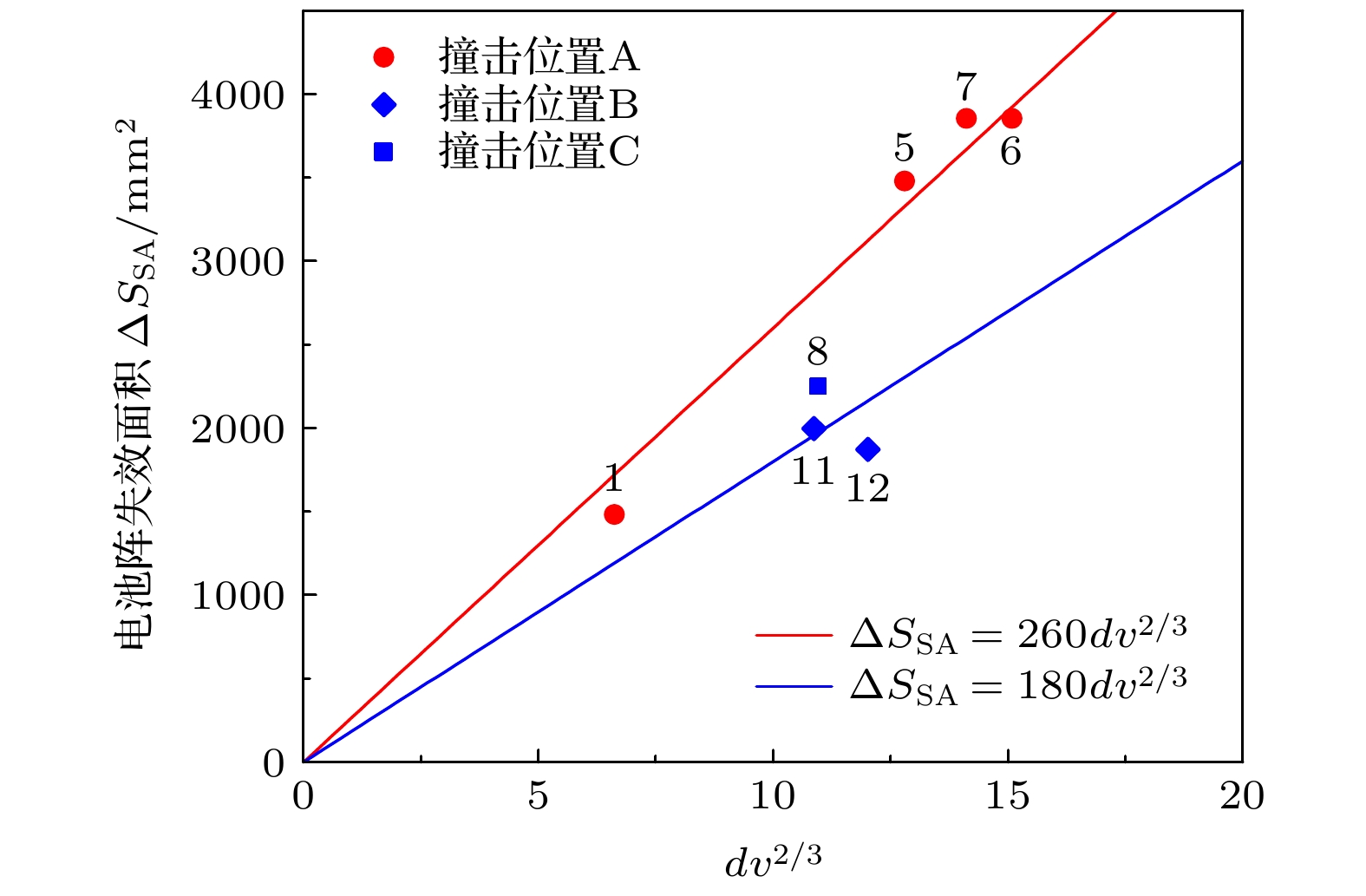-
Solar array is a power source of spacecraft, which is often damaged by the impact of micrometeoroids and space debris, resulting in the decrease of output power of solar array. The degradation law of volt-ampere characteristic for spacecraft solar arrays under orbital debris hypervelocity impact is investigated by using a two-stage light gas gun. The volt-ampere characteristics of the solar arrays under different impact velocities, projectile diameters and impact positions are studied. A total of 12 shots are carried out, of which 5 shots are invalid due to the impact of the projectile carrier on the specimen, and 7 shots are valid. The experimental results show that the diameter, impact velocity, and impact position of the projectile all have a great influence on the volt-ampere characteristics, and the damage morphology generated by the ground simulation test is in line with the in-orbit flight test results. The relationship between the failure area of the solar arrays and the area of the spalling area, the perforation area, the kinetic energy of the projectile as well as the impact position are analyzed. It is found that the ratio of failure area to peeling area is between 7 and 37, and the ratio of failure area to perforation area is between 50 and 150. The failure area in the center of the solar cell is significantly larger than that on the edge or at the connection of the solar cell. Failure area of solar array
$ \Delta {S}_{\mathrm{S}\mathrm{A}} $ and the cube root of kinetic energy E ($ E=\mathrm{\pi }\rho {d}^{3}{v}^{2}/12 $ ) is consistent. In order to establish the accurate equation of power loss area with projectile diameter and impact velocity, in this paper it is assumed that there is a power exponential relationship among them, and then solve the undetermined coefficient by the data fitting method. Finally, we establish the power loss$ {\Delta P}_{\mathrm{m}\mathrm{a}\mathrm{x}} $ equation and failure area$ \Delta {S}_{\mathrm{S}\mathrm{A}} $ equation suitable for domestic solar array. The equation will be$ {\Delta P}_{\mathrm{m}\mathrm{a}\mathrm{x}}=0.047d{v}^{2/3} $ ,$ \Delta {S}_{\mathrm{S}\mathrm{A}}=260d{v}^{2/3} $ when the impact occurs in the center of the cell, and$ {\Delta P}_{\mathrm{m}\mathrm{a}\mathrm{x}}=0.033d{v}^{2/3} $ ,$ \Delta {S}_{\mathrm{S}\mathrm{A}}=180d{v}^{2/3} $ when the impact occurs on the edge or at the connection of the solar cell. The prediction error of the equation is in a range of 13.3%, and the average deviation is 7.6%. This equation can be used to describe the function relationship between the power loss or failure area of the solar arrays and the diameter, impact velocity and impact position of the projectile under the condition of 0° impact angle. The research method in this paper can be used as a reference for the performance degradation assessment of Chinese spacecraft solar panels under the hypervelocity impact of orbital debris, the established power loss equation and failure area equation can predict the law of power decline and failure area of solar array caused by space debris, and the results have important application value for Chinese aerospace engineering.-
Keywords:
- solar arrays /
- hypervelocity impact /
- volt-ampere characteristic /
- power loss equation /
- failure area equation /
- orbital debris
[1] Drolshagen G, Mcdonnell T, Mandeville J C, Moussic A 2006 Acta Astron. 58 471
 Google Scholar
Google Scholar
[2] Medina D F, Wright L, Campbell M 2001 Advances in Space Research 28 1347
 Google Scholar
Google Scholar
[3] Mcdonnell J A, Catling D J, Herbert M K, Clegg R. A 2001 Int. J. Impact Engin. 26 487
 Google Scholar
Google Scholar
[4] Stansbery E G, Foster J L 2004 Advances in Space Research 34 878
 Google Scholar
Google Scholar
[5] Drolshagen G, Mcdonnell J A 1995 Advances in Space Research 16 85
[6] Moussi A, Drolshagen G, Mcdonnell J A M, Mandeville J C, Kearsley A T, Ludwig H 2005 Advances in Space Research 35 1243
 Google Scholar
Google Scholar
[7] Graham G A, Mcbride N, Kearsley A T, Drolshagen G, Green S. F, Mcdonnell J A M, Grady M M, Wright I P 2001 Int. J. Impact Engin. 26 263
 Google Scholar
Google Scholar
[8] Kearsley A T, Graham G A, Mcdonnell J A M, Taylor E A, Drolshagen G, Chater R J, McPhail D, Burchell M J 2007 Advances in Space Research 39 590
 Google Scholar
Google Scholar
[9] Christie R J, Best S R, Myhre C A 1994 Hypervelocity Impact Testing of Space Station Freedom Solar Cell (NASA Center for AeroSpace Information) Report No. NASA-TM-106509
[10] Burt R R, Christiansen E L 2001 Hubble Space Telescope Solar Array Hypervelocity Impact Tests (NASA Johnson Space Center: The Orbital Debris Quarterly News) p2
[11] Burt R R, Christiansen E L 2001 SM Solar Array and SM Cylinder Shield (Zone 10) HVI Tests (NASA Johnson Space Center) Report No. JSC-29485
[12] Herbert M K 1999 Int. J. Impact Engin. 23 377
 Google Scholar
Google Scholar
[13] Stadermann F J, Heiss C H, Reichling M 1997 Advances in Space Research 20 1517
 Google Scholar
Google Scholar
[14] Akahoshi Y, Nakamura T, Fukushige S, Furusawa N, Kusunoki S, Machida Y, Koura T, Watanabe K, Hosoda S, Fujita T, Cho M 2008 Int. J. Impact Engin. 35 1678
 Google Scholar
Google Scholar
[15] Harano T, Machida Y, Fukushige S, Koura, T Hosoda, S Cho, M Akahoshi, Y 2006 Int. J. Impact Engin. 33 326
 Google Scholar
Google Scholar
[16] 黄建国, 韩建伟, 李宏伟, 蔡明辉, 李小银 2008 物理学报 57 7950
 Google Scholar
Google Scholar
Huang J G, Han J W, Li H W, Cai M H, Li X Y 2008 Acta Phys. Sin. 57 7950
 Google Scholar
Google Scholar
[17] 李宏伟, 黄建国, 韩建伟, 蔡明辉, 李小银, 高著秀 2010 航天器环境工程 27 290
 Google Scholar
Google Scholar
Li H W, Huang J g, Han J W, Cai M H, Li X Y, Gao Z X 2010 Spacecraft Environment Engineering 27 290
 Google Scholar
Google Scholar
[18] 张立佼 2015 硕士学位论文 (沈阳: 沈阳理工大学)
Zhang L J 2005 M. S. Thesis (Shenyang: Shenyang Ligong University) (in Chinese)
[19] Tang E L, Li Z, Zhang Q M, Wang M, Xiang S H, Liu S H, He L P, Han Y F, Xia J, Wang H L, Xu M Y 2016 Int. J. Appl. Electromagn. Mech 51 337
 Google Scholar
Google Scholar
[20] 姜东升, 郑世贵, 马宁, 刘莹, 邱羽玲 2017 航天器工程 26 114
 Google Scholar
Google Scholar
Jiang D S, Zheng S G, Ma N, Liu Y, Qiu Y L 2017 Spacecraft Engineering 26 114
 Google Scholar
Google Scholar
[21] 张书锋, 柴昊, 周玉新, 张明志, 刘振风, 王田 2016 爆炸与冲击 36 386
 Google Scholar
Google Scholar
Zhang S F, Chai H, Zhou Y X, Zhang M Z, Liu Z F, Wang T 2016 Explosion and Shock Waves 36 386
 Google Scholar
Google Scholar
[22] 郑建东, 牛锦超, 钟红仙, 龚自正, 曹燕 2019 物理学报 68 220201
 Google Scholar
Google Scholar
Zheng J D, Niu J C, Zhong H X, Gong Z Z, Cao Y 2019 Acta Phys. Sin. 68 220201
 Google Scholar
Google Scholar
-
图 8 试件No.8试验后的(a)损伤形貌和(b)伏安特性曲线(因红色圆圈内受到弹托撞击较大, 损失一定功率, 去除弹托影响, 最大输出功率由1.37 W, 修正为1.39 W)
Figure 8. (a) Damage morphology and (b) volt-ampere characteristic curve of No.8 solar arrays (The maximum output power is revised from 1.37 W to 1.39 W to reduce the effect from sabot impact, since the power in the red cycle has lost caused by sabot impact).
表 1 试验结果
Table 1. Test result
试验编号 测试序号 弹丸直径
d/mm弹丸速度
v/(km·s–1)穿孔面积Sh/mm2 剥落面积Sc/mm2 试验前最大输出
功率$ {P}_{\mathrm{m}\mathrm{a}\mathrm{x}}^{0} $/W试验后最大输出
功率$ {P}_{\mathrm{m}\mathrm{a}\mathrm{x}}^{1} $/W失效面积SSA/mm2 撞击点
位置No.1 511-ZJD-1-8 3.04 3.21 12.02 52.17 1.80 1.53 1482 A No.5 511-ZJD-1-5 5.00 4.10 31.24 125.68 1.79 1.16 3478 A No.6 511-ZJD-1-7 5.00 5.24 34.97 150.22 1.82 1.11 3855 A No.7 511-ZJD-1-6 4.02 6.58 27.01 107.51 1.82 1.11 3855 A No.8 511-ZJD-1-4 5.00 3.25 31.88 288.02 1.80 1.39* 2251 B No.11 511-ZJD-2-2 4.04 5.13 24.49 261.87 2.12 1.77 1872 C No.12 511-ZJD-2-1 5.00 3.21 37.35 129.28 2.10 1.73 1998 C 注: *为修正后数据; 由于穿孔边缘受到微量纤维遮挡, 穿孔面积为显微镜测量值基础上, 加上1%—3%的修正量. 表 2 功率损失方程的精度
Table 2. Accuracy of power loss equation
试件编号 1 5 6 7 8 11 12 偏差 –13.2% +4.7% +0.1% +7.0% +13.3% –11.7% +3.2% -
[1] Drolshagen G, Mcdonnell T, Mandeville J C, Moussic A 2006 Acta Astron. 58 471
 Google Scholar
Google Scholar
[2] Medina D F, Wright L, Campbell M 2001 Advances in Space Research 28 1347
 Google Scholar
Google Scholar
[3] Mcdonnell J A, Catling D J, Herbert M K, Clegg R. A 2001 Int. J. Impact Engin. 26 487
 Google Scholar
Google Scholar
[4] Stansbery E G, Foster J L 2004 Advances in Space Research 34 878
 Google Scholar
Google Scholar
[5] Drolshagen G, Mcdonnell J A 1995 Advances in Space Research 16 85
[6] Moussi A, Drolshagen G, Mcdonnell J A M, Mandeville J C, Kearsley A T, Ludwig H 2005 Advances in Space Research 35 1243
 Google Scholar
Google Scholar
[7] Graham G A, Mcbride N, Kearsley A T, Drolshagen G, Green S. F, Mcdonnell J A M, Grady M M, Wright I P 2001 Int. J. Impact Engin. 26 263
 Google Scholar
Google Scholar
[8] Kearsley A T, Graham G A, Mcdonnell J A M, Taylor E A, Drolshagen G, Chater R J, McPhail D, Burchell M J 2007 Advances in Space Research 39 590
 Google Scholar
Google Scholar
[9] Christie R J, Best S R, Myhre C A 1994 Hypervelocity Impact Testing of Space Station Freedom Solar Cell (NASA Center for AeroSpace Information) Report No. NASA-TM-106509
[10] Burt R R, Christiansen E L 2001 Hubble Space Telescope Solar Array Hypervelocity Impact Tests (NASA Johnson Space Center: The Orbital Debris Quarterly News) p2
[11] Burt R R, Christiansen E L 2001 SM Solar Array and SM Cylinder Shield (Zone 10) HVI Tests (NASA Johnson Space Center) Report No. JSC-29485
[12] Herbert M K 1999 Int. J. Impact Engin. 23 377
 Google Scholar
Google Scholar
[13] Stadermann F J, Heiss C H, Reichling M 1997 Advances in Space Research 20 1517
 Google Scholar
Google Scholar
[14] Akahoshi Y, Nakamura T, Fukushige S, Furusawa N, Kusunoki S, Machida Y, Koura T, Watanabe K, Hosoda S, Fujita T, Cho M 2008 Int. J. Impact Engin. 35 1678
 Google Scholar
Google Scholar
[15] Harano T, Machida Y, Fukushige S, Koura, T Hosoda, S Cho, M Akahoshi, Y 2006 Int. J. Impact Engin. 33 326
 Google Scholar
Google Scholar
[16] 黄建国, 韩建伟, 李宏伟, 蔡明辉, 李小银 2008 物理学报 57 7950
 Google Scholar
Google Scholar
Huang J G, Han J W, Li H W, Cai M H, Li X Y 2008 Acta Phys. Sin. 57 7950
 Google Scholar
Google Scholar
[17] 李宏伟, 黄建国, 韩建伟, 蔡明辉, 李小银, 高著秀 2010 航天器环境工程 27 290
 Google Scholar
Google Scholar
Li H W, Huang J g, Han J W, Cai M H, Li X Y, Gao Z X 2010 Spacecraft Environment Engineering 27 290
 Google Scholar
Google Scholar
[18] 张立佼 2015 硕士学位论文 (沈阳: 沈阳理工大学)
Zhang L J 2005 M. S. Thesis (Shenyang: Shenyang Ligong University) (in Chinese)
[19] Tang E L, Li Z, Zhang Q M, Wang M, Xiang S H, Liu S H, He L P, Han Y F, Xia J, Wang H L, Xu M Y 2016 Int. J. Appl. Electromagn. Mech 51 337
 Google Scholar
Google Scholar
[20] 姜东升, 郑世贵, 马宁, 刘莹, 邱羽玲 2017 航天器工程 26 114
 Google Scholar
Google Scholar
Jiang D S, Zheng S G, Ma N, Liu Y, Qiu Y L 2017 Spacecraft Engineering 26 114
 Google Scholar
Google Scholar
[21] 张书锋, 柴昊, 周玉新, 张明志, 刘振风, 王田 2016 爆炸与冲击 36 386
 Google Scholar
Google Scholar
Zhang S F, Chai H, Zhou Y X, Zhang M Z, Liu Z F, Wang T 2016 Explosion and Shock Waves 36 386
 Google Scholar
Google Scholar
[22] 郑建东, 牛锦超, 钟红仙, 龚自正, 曹燕 2019 物理学报 68 220201
 Google Scholar
Google Scholar
Zheng J D, Niu J C, Zhong H X, Gong Z Z, Cao Y 2019 Acta Phys. Sin. 68 220201
 Google Scholar
Google Scholar
Catalog
Metrics
- Abstract views: 7397
- PDF Downloads: 79
- Cited By: 0





















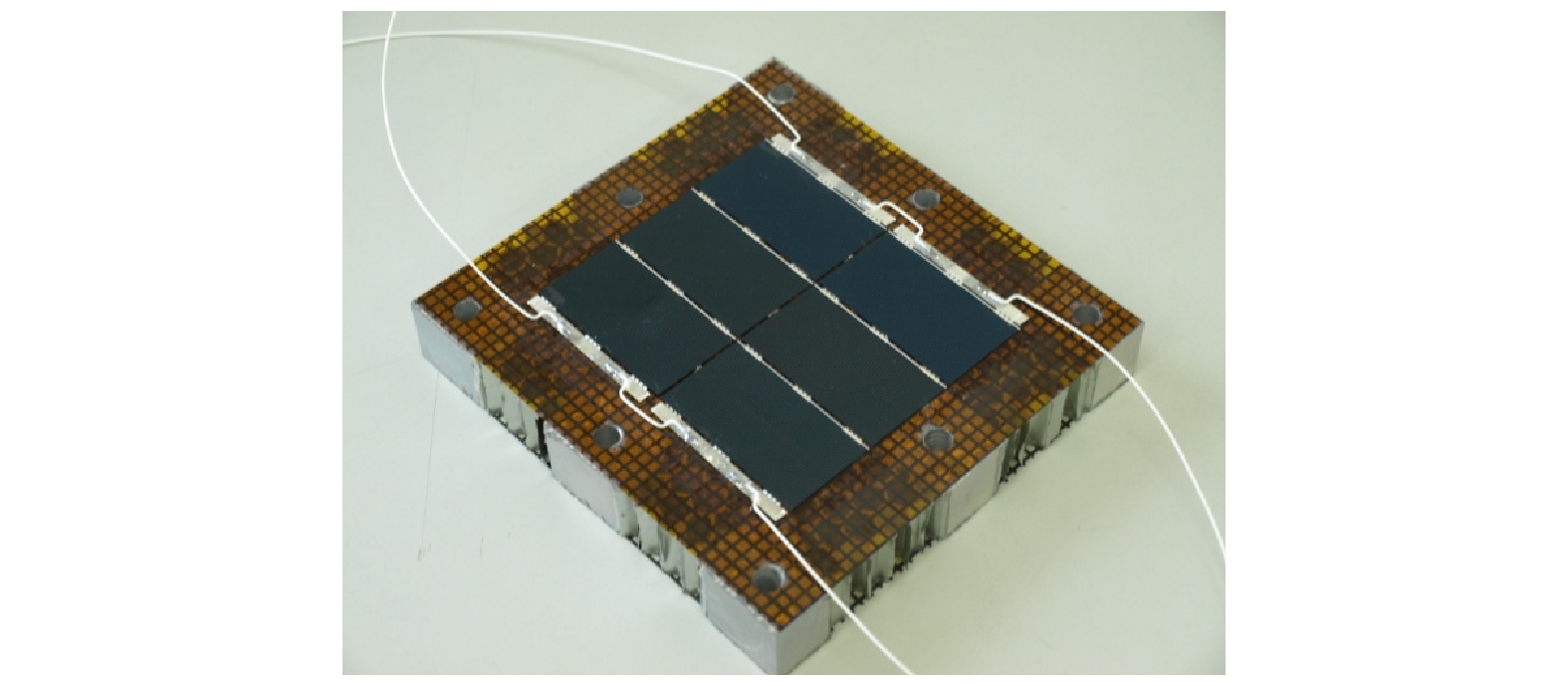
 DownLoad:
DownLoad:
